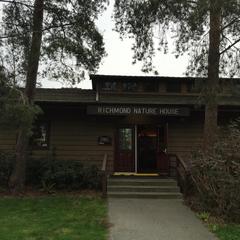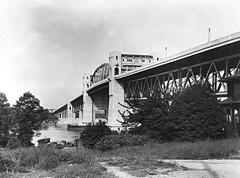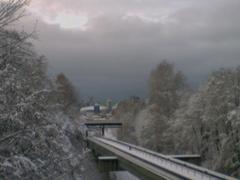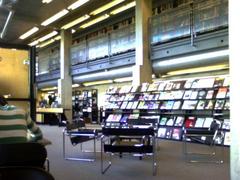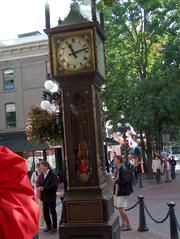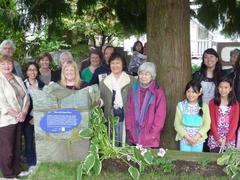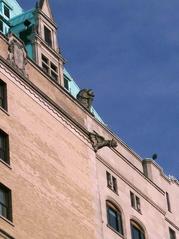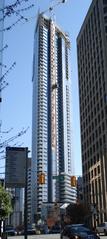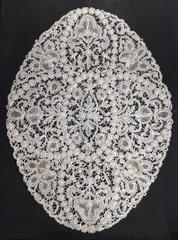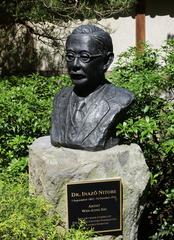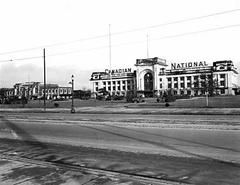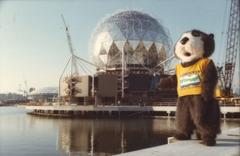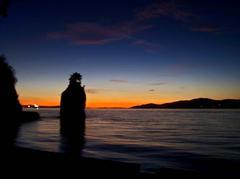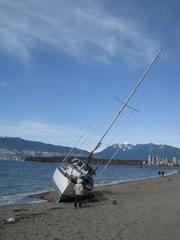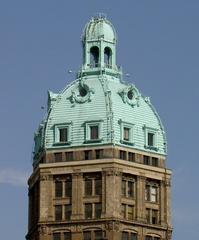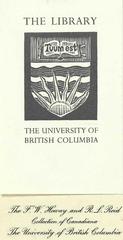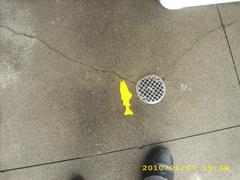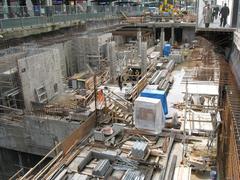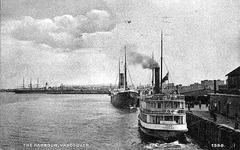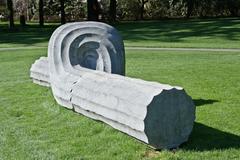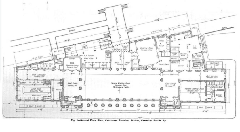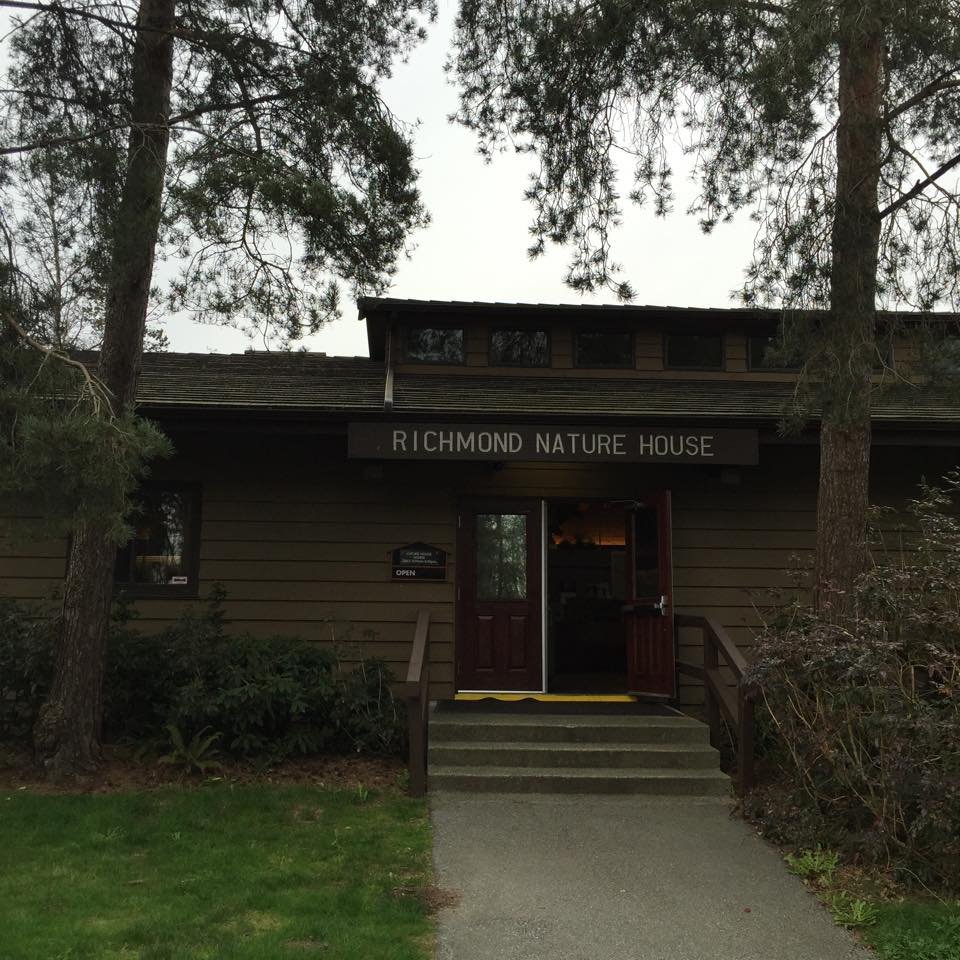
Guide to Visiting Time Trail in Vancouver
Publication Date: 23/07/2024
Introduction
Vancouver, Canada, a city renowned for its vibrant cultural tapestry and stunning natural landscapes, offers a unique attraction known as the Time Trail. Established in 2015, the Time Trail is a relatively new addition to Vancouver’s extensive network of urban trails. This trail was created as part of the city’s broader initiative to promote outdoor activities and sustainable urban living. Spearheaded by the Vancouver Park Board in collaboration with local historians and environmentalists, the Time Trail provides recreational opportunities and educational experiences that highlight Vancouver’s rich history and natural beauty (Tourism Vancouver).
The trail features significant historical landmarks such as the iconic Gastown Steam Clock, built in 1977, and the serene Dr. Sun Yat-Sen Classical Chinese Garden, opened in 1986 (Gastown Steam Clock, Dr. Sun Yat-Sen Classical Chinese Garden). Additionally, the trail showcases cultural installations such as the Reconciliation Pole, carved by Haida artist James Hart, which commemorates the history and resilience of Indigenous peoples in Canada (James Hart). Whether you are a history enthusiast, nature lover, or simply seeking a leisurely stroll, the Time Trail offers a memorable experience for all visitors.
Table of Contents
- [Origins and Development](#origins-and-developmentorigins-and-development)
- [Historical Landmarks](#historical-landmarkshistorical-landmarks)
- [Gastown Steam Clock](#gastown-steam-clockgastown-steam-clock)
- [Dr. Sun Yat-Sen Classical Chinese Garden](#dr-sun-yat-sen-classical-chinese-gardendr-sun-yat-sen-classical-chinese-garden)
- [Cultural Significance](#cultural-significancecultural-significance)
- [Environmental Impact](#environmental-impactenvironmental-impact)
- [Historical Landmarks](#historical-landmarkshistorical-landmarks)
- [Visitor Experience](#visitor-experiencevisitor-experience)
- [Accessibility](#accessibilityaccessibility)
- [Community Engagement](#community-engagementcommunity-engagement)
- [Future Developments](#future-developmentsfuture-developments)
- [Visitor Information](#visitor-informationvisitor-information)
- [Transportation](#transportationtransportation)
- [Best Time to Visit](#best-time-to-visitbest-time-to-visit)
- [Admission and Hours](#admission-and-hoursadmission-and-hours)
- [What to Bring](#what-to-bringwhat-to-bring)
- [Guided Tours and Activities](#guided-tours-and-activitiesguided-tours-and-activities)
- [Nearby Attractions](#nearby-attractionsnearby-attractions)
- [Safety Tips](#safety-tipssafety-tips)
- [Local Etiquette](#local-etiquettelocal-etiquette)
- [FAQ](#faqfaq)
- [Educational Programs](#educational-programseducational-programs)
- [Guided Tours](#guided-toursguided-tours)
- [Educational Workshops](#educational-workshopseducational-workshops)
- [Amenities](#amenitiesamenities)
- [Rest Areas](#rest-areasrest-areas)
- [Restrooms](#restroomsrestrooms)
- [Refreshments](#refreshmentsrefreshments)
Exploring Vancouver’s Time Trail - History, Significance, and Visitor Information
Origins and Development
The Time Trail in Vancouver, Canada, was established in 2015 as part of Vancouver’s initiative to promote outdoor activities and sustainable urban living. Spearheaded by the Vancouver Park Board in collaboration with local historians and environmentalists, the trail offers both recreational opportunities and educational experiences, highlighting the city’s rich history and natural beauty.
Historical Landmarks
One of the most significant aspects of the Time Trail is its integration of historical landmarks, offering a glimpse into Vancouver’s past.
Gastown Steam Clock
The trail includes a stop at the Gastown Steam Clock, one of the city’s most iconic landmarks. Built in 1977, the steam clock is a nod to Victorian-era technology and serves as a reminder of Vancouver’s early days as a bustling port town.
Dr. Sun Yat-Sen Classical Chinese Garden
Another notable landmark along the trail is the Dr. Sun Yat-Sen Classical Chinese Garden, the first full-scale classical Chinese garden built outside of China. Opened in 1986, the garden offers a serene escape and a deep dive into Chinese culture and its influence on Vancouver’s development.
Cultural Significance
The Time Trail is also a cultural journey. The trail features art installations and murals that reflect the diverse communities that have shaped Vancouver. One such installation is the “Reconciliation Pole,” a totem pole carved by Haida artist James Hart. Erected in 2017, the pole commemorates the history and resilience of Indigenous peoples in Canada, serving as a powerful symbol of reconciliation and cultural preservation.
Environmental Impact
The Time Trail is an environmental asset, designed with sustainability in mind. It incorporates green spaces and native plant species to promote biodiversity. The Vancouver Park Board has implemented initiatives to maintain the ecological balance along the trail, including regular clean-up drives and educational programs on environmental stewardship.
Visitor Experience
The Time Trail offers a unique visitor experience that combines physical activity with educational enrichment. The trail is well-marked with informational plaques and QR codes that provide detailed descriptions of the landmarks and their historical context. Visitors can take advantage of guided tours offered by local historians and cultural experts, providing deeper insights into the significance of each site.
Accessibility
Accessibility is a key feature of the Time Trail. The trail is designed to be inclusive, with paved paths that accommodate wheelchairs and strollers. There are also several rest areas equipped with benches and water fountains, making it a comfortable experience for visitors of all ages and abilities.
Community Engagement
The Time Trail has become a focal point for community engagement in Vancouver. Local schools frequently organize field trips to the trail, and community groups often host events and activities along the path. The trail has also inspired several community art projects, including murals and sculptures that reflect the city’s diverse cultural heritage.
Future Developments
The Vancouver Park Board plans to expand the Time Trail to include additional historical sites and cultural landmarks. There are proposals to incorporate interactive digital elements, such as augmented reality experiences, to enhance the educational value of the trail. These developments aim to make the Time Trail an even more enriching experience for both locals and tourists.
A Complete Guide to Visiting Time Trail in Vancouver - Hours, Tickets, and Tips
Transportation
Time Trail is conveniently located in Vancouver, making it accessible by various modes of transportation:
- Public Transit: Vancouver’s public transit system, TransLink, offers several bus routes that stop near Time Trail. The nearest SkyTrain station is the Main Street-Science World Station, about a 15-minute walk from the site. For more information on routes and schedules, visit the TransLink website.
- By Car: There are several parking lots nearby. However, parking can be limited during peak hours, so it’s advisable to arrive early.
- Cycling: Vancouver is a bike-friendly city with numerous bike lanes. You can rent a bike from various rental shops around the city. For bike routes, check out the City of Vancouver’s cycling map.
Best Time to Visit
The best time to visit Time Trail is during the spring and summer months (April to September) when the weather is pleasant, and the days are longer. This period also coincides with various local festivals and events:
- Spring (April to June): Mild temperatures and blooming flowers make this a great time for outdoor activities.
- Summer (July to September): Warm weather and clear skies are perfect for exploring the trail and participating in outdoor events.
Admission and Hours
Time Trail is open year-round, but hours of operation may vary depending on the season and special events:
- Regular Hours: Typically, the trail is open from 9:00 AM to 6:00 PM.
- Admission Fees: There is no admission fee to access Time Trail, making it an affordable activity for all visitors.
What to Bring
To ensure a comfortable and enjoyable visit, consider bringing the following items:
- Comfortable Footwear: The trail involves a fair amount of walking, so wear comfortable shoes.
- Weather-Appropriate Clothing: Vancouver’s weather can be unpredictable. Bring a light jacket or raincoat, especially during the spring and fall.
- Water and Snacks: While there are cafes and restaurants nearby, it’s a good idea to carry water and snacks.
- Camera: The trail offers numerous photo opportunities, so don’t forget your camera or smartphone.
Guided Tours and Activities
For a more enriching experience, consider joining a guided tour:
- Guided Tours: Several local tour companies offer guided tours of Time Trail. These tours typically last about 1-2 hours and cover the main highlights of the trail. For bookings and more information, visit Vancouver Tours.
- Self-Guided Tours: If you prefer exploring at your own pace, download a self-guided tour map from the official Time Trail website.
Nearby Attractions
Time Trail is located in a vibrant area with several other attractions nearby. Consider extending your visit to explore these sites:
- Science World: Located just a short walk from Time Trail, Science World offers interactive exhibits and an OMNIMAX theatre. For more details, visit Science World.
- False Creek: Enjoy a scenic walk along False Creek, which offers stunning views of the city skyline and waterfront.
- Granville Island: A bustling hub of shops, restaurants, and galleries. Check out the Granville Island website for more information.
Safety Tips
While Time Trail is generally safe, it’s always good to be prepared:
- Stay on Marked Paths: To protect both yourself and the environment, stay on designated paths.
- Be Aware of Wildlife: While encounters with wildlife are rare, it’s important to be aware of your surroundings.
- Emergency Contacts: In case of an emergency, dial 911. For non-emergencies, contact the local visitor center.
Local Etiquette
Respecting local customs and etiquette can enhance your visit:
- Leave No Trace: Dispose of trash properly and respect the natural environment.
- Quiet Zones: Some areas may be designated as quiet zones. Keep noise levels down to respect other visitors.
- Photography: While photography is generally allowed, be mindful of signs indicating restricted areas.
FAQ
Q: What are the operating hours of Time Trail?
A: Time Trail is typically open from 9:00 AM to 6:00 PM, but hours may vary depending on the season and special events.
Q: Is there an admission fee for Time Trail?
A: No, there is no admission fee to access Time Trail.
Q: Are guided tours available?
A: Yes, several local tour companies offer guided tours. You can also download a self-guided tour map from the official Time Trail website.
Q: Is Time Trail accessible for individuals with disabilities?
A: Yes, the trail is wheelchair accessible, and accessible restrooms are available.
Educational Programs
Guided Tours
For those interested in a more in-depth experience, guided tours are available. These tours are led by knowledgeable guides who provide detailed information about the history, flora, and fauna of the area. Booking in advance is recommended, especially during peak seasons.
Educational Workshops
Pacific Spirit Regional Park offers various educational workshops throughout the year. These workshops cover a range of topics, including wildlife conservation, Indigenous history, and sustainable practices. Information about upcoming workshops can be found on the Metro Vancouver Regional Parks website.
Amenities
Rest Areas
Several rest areas are strategically located along Time Trail. These areas are equipped with benches and picnic tables, providing a perfect spot to take a break and enjoy the natural surroundings.
Restrooms
Public restrooms are available at the main entrance points to the trail. These facilities are well-maintained and accessible to all visitors.
Refreshments
While there are no food vendors directly on Time Trail, several cafes and restaurants are located near the UBC entrance. These establishments offer a variety of dining options, from quick snacks to full meals. Visitors are also welcome to bring their own food and enjoy a picnic at one of the designated rest areas.
Conclusion
The Time Trail in Vancouver stands as a testament to the city’s commitment to preserving its historical heritage, promoting cultural diversity, and fostering environmental sustainability. This unique trail seamlessly blends historical landmarks, cultural insights, and natural beauty, offering an enriching experience for both locals and tourists. From the iconic Gastown Steam Clock and the tranquil Dr. Sun Yat-Sen Classical Chinese Garden to the inspiring Reconciliation Pole, the Time Trail is a journey through time and culture. Moreover, the trail’s sustainable design and community engagement initiatives highlight Vancouver’s dedication to environmental stewardship and inclusivity. As you explore the Time Trail, you not only enjoy a scenic and educational walk but also contribute to the ongoing efforts to preserve and celebrate Vancouver’s rich history and diverse culture. For more information and updates, visit the official Time Trail website and Tourism Vancouver.
References
- ‘Exploring Vancouver’s Time Trail - History, Significance, and Visitor Information’, 2024, Vancouver Park Board (source)
- ‘A Complete Guide to Visiting Time Trail in Vancouver - Hours, Tickets, and Tips’, 2024, TransLink (source)
- ‘Explore Time Trail - Visiting Hours, Tickets, and Historical Sites in Vancouver’, 2024, Metro Vancouver Regional Parks (source)
